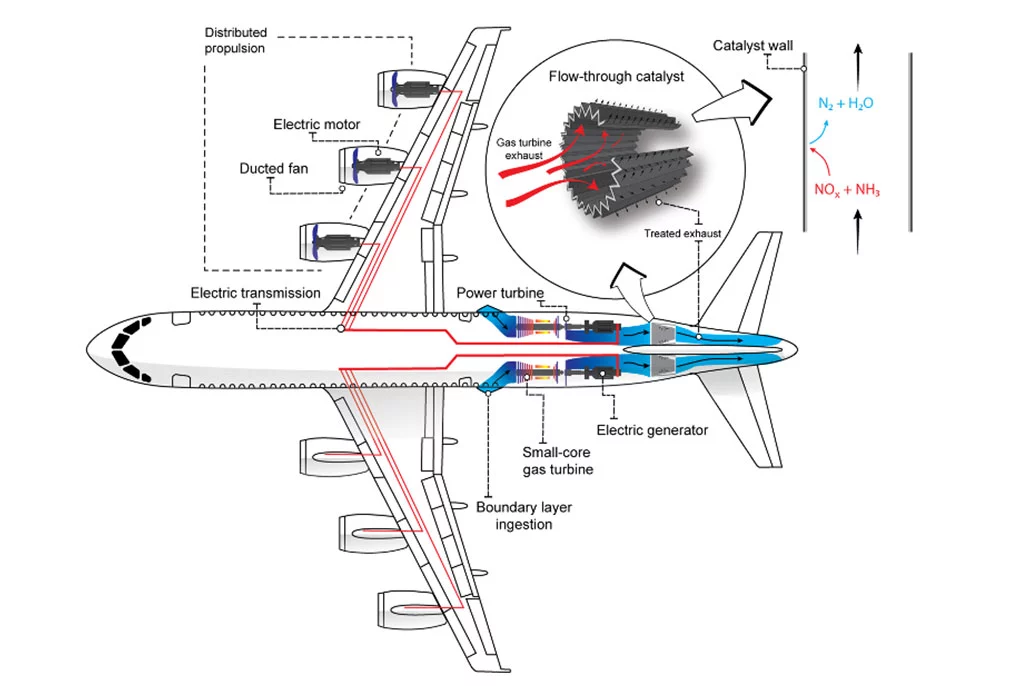Shifting to alternative propulsion technologies could go a long way toward cleaning up the pollution created by the aviation sector, and a new design cooked up by MIT scientists offers an intriguing look at a potential solution. The engineering team behind the concept say it could cut as much as 95 percent of a plane’s harmful nitrogen oxide emissions, by capturing much of the pollution within the aircraft’s cargo hold.
Along with aircraft carbon dioxide emissions, which contribute around two or three percent of the global total, aircraft jet engines produce nitrogen oxide, another harmful pollutant. This is the same poisonous gas generated by diesel vehicles and the one at the center of Volkswagen’s infamous emissions cheating scandal, with research linking the pollutant to tens of thousands of premature deaths each year through respiratory and cardiovascular problems.
It was actually the Volkswagen scandal that inspired this new hybrid-electric plane concept from the MIT engineers, with the team studying the health impacts of the episode and wondering if some lessons could be applied to the world of aviation. More specifically, the team wondered if the types of emissions control systems used in diesel trucks and other ground vehicles could be worked into the propulsion systems used in aircraft, though this idea poses some challenges.
This is because the gas turbines beneath the wings that make the plane propellors spin also pump exhaust out the back of the aircraft, and attaching an emission control device to them would severely hamper the thrust they produce. The team believes it has found a workaround for this problem, by repositioning the gas turbines in the plane’s cargo hold.
From there, the gas turbines power a generator instead of directly driving the propellors, which produces electricity that can be used to power the propellors instead. At the same time, the exhaust pouring from the gas turbines could be captured by an emission-control system also housed in the plane’s cargo hold, cleaning the air before ejecting it into the atmosphere.

If this type of system was built into the belly of large aircraft, the researchers calculate it could eliminate 95 percent of their nitrogen oxide emissions and 92 percent of associated early deaths, while the added weight would only require 0.6 percent more fuel for the plane to carry it across the skies. In this way, the hybrid system shapes as a potential stepping stone in the electrification of larger aircraft, where the limited power density of today’s batteries mean they are unable to travel meaningful distances.
“This would be many, many times more feasible than what has been proposed for all-electric aircraft,” Barrett says. “This design would add some hundreds of kilograms to a plane, as opposed to adding many tons of batteries, which would be over a magnitude of extra weight.”
While the idea remains just a concept for now, it is certainly an interesting look at how we might address the problem of air pollution as it pertains to aviation, with the team also looking into how it might cut carbon emissions, too.
“This would still be a tremendous engineering challenge, but there aren’t fundamental physics limitations,” says Steven Barrett, professor of aeronautics and astronautics at MIT. “If you want to get to a net-zero aviation sector, this is a potential way of solving the air pollution part of it, which is significant, and in a way that’s technologically quite viable.”
A paper detailing the concept was published in the journal Energy and Environmental Science.
Source: MIT




